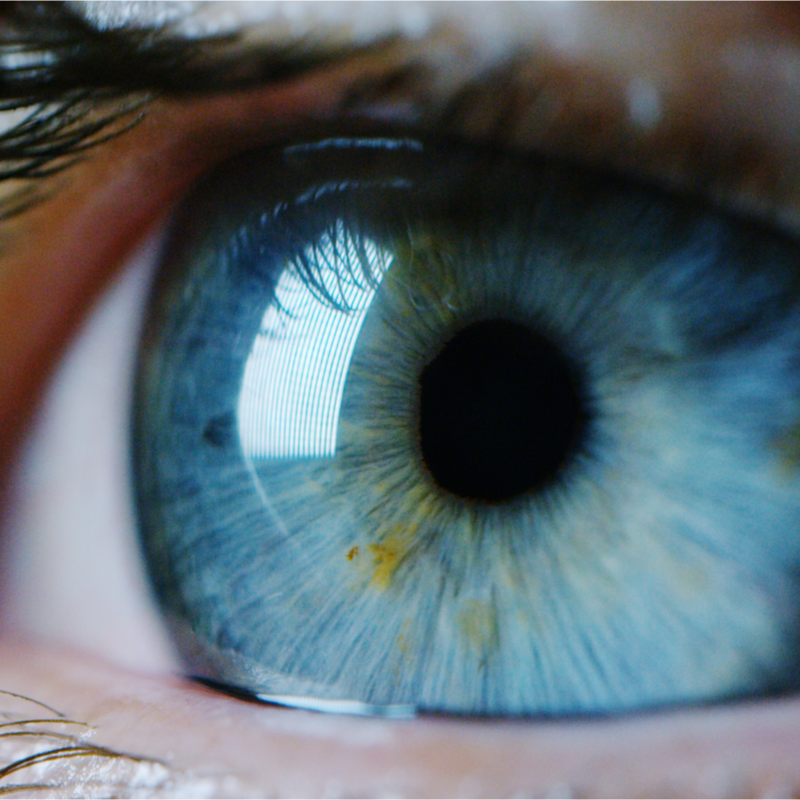
What is retinoblastoma?
Retinoblastoma is a rare cancer of the eye that develops mainly in babies and young children. A retinoblastoma develops from the cell of the retina and can develop in one (unilateral retinoblastoma) or both eyes (bilateral retinoblastoma). Doctors distinguish between three forms of retinoblastoma, a genetic predisposition (hereditary form), spontaneous tumour formation (non-hereditary form) and the so-called trilateral retinoblastoma, which is a special case . This is the hereditary form of retinoblastoma. This is the hereditary form of retinoblastoma, which occurs in combination with a brain tumour.
What causes retinoblastoma to develop?
A retinoblastoma is caused by two genetic changes, which either occur (spontaneously) in the precursor cells of the retina or but are present in all body cells and are inherited. Almost half of all cases of the disease are due to a non-hereditary form of retinoblastoma. This is therefore a mutation that has arisen exclusively in the tumour cells. In almost a quarter of all hereditary forms of retinoblastoma there are already other hereditary diseases in the family. Doctors also refer to this as a familial retinoblastoma. Both the hereditary and the non-hereditary forms of retinoblastoma are caused by a genetic change in chromosome 13.
How does a retinoblastoma develop?
A retinoblastoma arises from the cells of the retina and lines the inner surface of the eyeball. According to this, the retinoblastoma is initially limited to the retina, but can spread in different directions with increasing size. For example, other structures in the eye, such as the choroid or sclera (the adjacent membranes of the eye) the vitreous body or the optic nerve can be affected .
What are the symptoms of retinoblastoma?
If it is a small retinoblastoma, it normally causes hardly any symptoms, which means that the disease is asymptomatic for a longer period of time . Only when the size of the tumour increases or the tumour grows into other parts of the eye can symptoms occur . These can affect vision, for example. These can, for example, affect the eyesight or, in the worst case, even lead to blindness. In about 25 percent of all cases of the disease, a squint can occur, which indicates that one eye has become blind.
As characteristic first symptom of the disease, more than two thirds of all people affected experience a white flashing of the pupil (cat's eye) when certain light conditions are present. This can happen when taking photographs, for example. Doctors refer to this as leukocoria , which can indicate that a tumour is growing behind the lens. More rarely, children complain of painful, reddened or swollen eyes, which can be explained by increased intraocular pressure.
If you suspect a retinoblastoma, it is not only advisable to see a doctor, but also to look out for the following warning signs:
- a whitish-yellow colouring or dilatation of one or both pupils,
- visual disturbance, or decrease in visual acuity and/or squinting,
- reddened or swollen eye and/or eye pain
How is retinoblastoma diagnosed?
In order to diagnose a retinoblastoma at , an ophthalmoscopy ( ) is required. If a tumour can be detected , further imaging procedures follow, such as an ultrasound examination (sonography) and/or a magnetic resonance imaging (MRI). In some individual cases, a cerebrospinal fluid and bone marrow puncture can also be performed.
Since a retinoblastoma can always have hereditary causes of development , the patient's siblings and parents will also be examined .
How is a retinoblastoma treated?
The following therapy measures can be used for a retinoblastoma:
- an operation, for example in the form of removing the affected eye (enucleation)
- radiation therapy, for example in the form of brachytherapy or percutaneous radiation therapy
- laser therapy
- cryotherapy
- chemotherapy
- a combination of the above-mentioned forms of therapy.
The
respective treatment method depends on whether it is a
unilateral or bilateral retinoblastoma and to what extent
the disease is already advanced at the time of diagnosis. In the
selection of therapy, the complete removal of the tumour
is always at the centre of all measures. If it is a unilateral
retinoblastoma, removal of the diseased eye can achieve a
cure. If the tumour is still small, a
treatment method can also be chosen, in which the eyeball remains
. However, since unilateral retinoblastoma is usually diagnosed rather late
, the affected person is usually already blind. The
removal of the eyeball therefore means no further impairment
of vision.
If, on the other hand, it is a bilateral retinoblastoma, various forms of treatment are usually used to ensure vision in at least one eye. In the case of small retinoblastomas, the tumour can usually be destroyed by a local form of therapy . If the tumours have already reached a certain size , chemotherapy is usually given before surgery to reduce the size of the tumour. As a rule the tumour growth has progressed so far in at least one eyeball that complete surgical removal is unavoidable. In some cases, it may even be necessary to remove both eyeballs in order not to put the child's life in danger .
What is the aftercare like?
Within the so-called tumour aftercare, the recurrence of the disease should be diagnosed in time and treated if necessary. In addition, possible consequences that occurred during the therapy can be determined, treated and alleviated at . Furthermore, the affected person, but also his/her family members, should be supported emotionally within the aftercare and appropriate assistance should be offered in case of social problems.
What is the prognosis for retinoblastoma?
If a retinoblastoma is not treated, it is always fatal. However, if the tumour is diagnosed and treated in time, the chances of cure are almost 95 percent. However, the prognosis prospects decrease when a trilateral retinoblastoma occurs.
